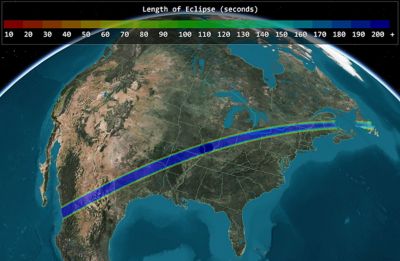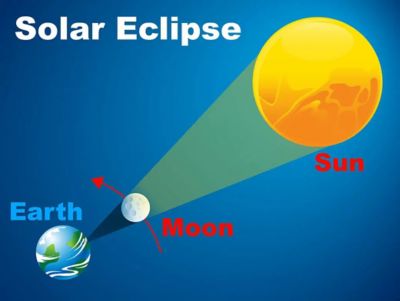-
-
Access Free Student Software
Ansys empowers the next generation of engineers
Students get free access to world-class simulation software.
-
Connect with Ansys Now!
Design your future
Connect with Ansys to explore how simulation can power your next breakthrough.
Countries & Regions
Free Trials
Products & Services
Learn
About
Back
Products & Services
Back
Learn
Ansys empowers the next generation of engineers
Students get free access to world-class simulation software.
Back
About
Design your future
Connect with Ansys to explore how simulation can power your next breakthrough.
Free Trials
ANSYS BLOG
March 25, 2024
Modeling the 2024 Solar Eclipse with Ansys STK
Who turned out the lights? What on Earth — or in space — is happening? You might be wondering this if you are in the path of totality for the April 8, 2024, solar eclipse, as it may seem like someone suddenly turned off all the lights. Even if you are not along the eclipse's path, you may see some odd-looking shadows around the time of the eclipse, depending on your location.

Ansys Systems Tool Kit (STK) image of the April 8, 2024, eclipse path
Which brings us to a big question: What is an eclipse? A solar eclipse takes place when the Sun, Moon, and Earth all line up. For us on the surface of the planet, we will see the Moon block out the Sun. If we were lucky enough to be camping on the Moon, we would see the shadow of the Moon fall on the surface of the Earth. And if we are on the Sun (a very hot vacation spot!), we would be wondering why the Earth decided to hide behind the Moon. It’s a very interesting astronomical event, and those of us in North America are lucky to be able to experience it this year.

In a solar eclipse, the Moon lines up between the Sun and the Earth. CREDIT: NASA, https://www.nasa.gov/image-article/solar-eclipse-diagram/
Solar eclipses are special in that they can give viewers two perspectives, depending on where they are located when the eclipse occurs. Folks who are in a location where the Moon’s shadow will directly fall will experience a total eclipse, meaning the entirety of the Sun will be blocked from view by the Moon. Others outside of the path of totality will experience a partial eclipse, meaning only part of the Sun will be blocked out. But don’t worry — this event will still impact the sunlight reaching the surface of the Earth, so you may notice some interesting shadows that look like crescents.
How do we know there is going to be an eclipse in April? Previously, astronomers had to track, measure, and calculate their eclipse predictions. (And we have some cautionary tales from history that detail the consequences of when they missed one.) These days, things aren’t so dire. We have fantastic tools and models of the Earth, Moon, and Sun, so predicting when an eclipse is going to take place is much easier.
Demonstration of using STK to model the April 2024 solar eclipse as it would be viewed from this year’s Space Symposium, held in Colorado Springs, Colorado.
One of the tools that can model the upcoming eclipse is Ansys Systems Tool Kit (STK). In STK, you can model the eclipse path and find out when it will begin for your location.
To learn how to digitally model this solar event, check out our Solar Eclipse Coverage Path of Totality course. In this free virtual training course, we will walk you through building a scenario and analyzing the path of totality for the solar eclipse. In this course, you will become more familiar with the capabilities of STK by learning how to insert objects to model lighting constraints and build a coverage definition over North America. You will also model a figure of merit to display the eclipse’s path of totality and examine lighting time reports for specific locations on Earth, which will show you the ideal time to go outside and experience the solar eclipse yourself.
You can find this course on the AGI Training Classes page and click “Access Resources” for the “Solar Eclipse Coverage Path of Totality” on-demand virtual training.
PLEASE PRACTICE EYE SAFETY. Do not look directly at the Sun during a full or partial eclipse. Also, do not look at the Sun through an optical device (phones or cameras) without solar filters.